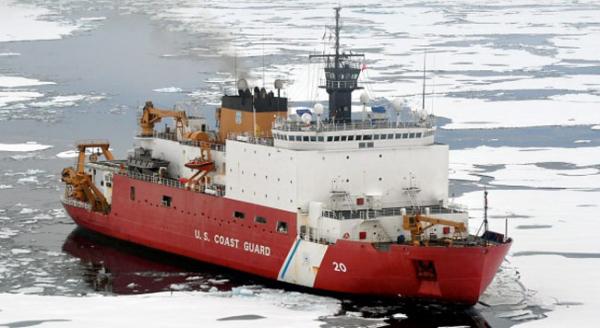
NASA to Go Boldly ... to the Arctic

A NASA mission is about to go boldly into the frigid waters of the Arctic Ocean in the space agency's first oceanographic research voyage to the top of the world.
NASA researchers are preparing for the voyage, known as the Impacts of Climate on Ecosystems and Chemistry of the Arctic Pacific Environment mission, or ICESCAPE, and which will leave later this month, Paula Bontempi, ocean biology and biogeochemistry program manager at NASA, said today
During the grueling mission, scientists will seek to unlock clues about the changing Arctic climate and the shifting ice conditions that affect ocean ecosystems.
The five-week voyage begins June 15, departing from Dutch Harbor, Alaska, on the U.S. Coast Guard icebreaker Healy. The Healy's field observations will allow scientists to make connections between the atmosphere, ocean, and sea ice in order to unravel the inner workings of Arctic Ocean ecosystems. Researchers will compare the ship's observation to NASA's satellite views of the Arctic Ocean biology and sea ice, which tell only part of the Arctic climate change story, Bontempi said.
"We're continuing the objective that we have to pioneer scientific discoveries," Bontempi said. "We're trying to understand and protect our home planet."
The ship will sail through the Bering Strait into the Chukchi and Beaufort seas off the northern coast of Alaska. Along the way, forty-three members of the science team will sample 50 to 100 stations and even disembark for extended periods to work on the sea ice. They'll study everything from the Arctic Ocean's optical properties to the physiology of phytoplankton, tiny creatures that serve as the basis for much of the marine food chain.
The scientists will use an array of instruments to sample the physical and chemical characteristics of the ocean and sea ice, as well as study the microscopic plant and animal life that regulate the flow of carbon into and out of the sea. The researchers are looking beyond measuring simply how hot the ocean is, but rather are focusing on measuring the light available for use by phytoplankton in producing energy to see how warming effects the ocean's food web.
Sign up for the Live Science daily newsletter now
Get the world’s most fascinating discoveries delivered straight to your inbox.
"To me what's really exciting about [ICESCAPE] is the biological connections," said ICESCAPE co-chief scientist Don Perovich of the Cold Regions Research and Engineering Laboratory in Hanover, N.H.
ICESCAPE will also measure sea ice thickness, which is not easy to determine from outer space, and will take carbon dioxide readings in the ocean surface and in the ice.
The ocean naturally absorbs carbon dioxide a potent greenhouse gas involved in global warming but climate change in the Arctic may be altering the ocean's ability to absorb carbon from the atmosphere.
Arctic sea ice is at its lowest point in thousands of years , as has been observed in satellite images. The ocean has warmed significantly over the past 16 years, particularly in the Arctic, causing substantial melting of sea ice. Ice cover was so low in 2007 that the fabled Northwest Passage between Russia and Asia opened "We're essentially blowing the lid off the ocean," said ICESCAPE chief scientist Kevin Arrigo of Stanford University in Palo Alto, Calif.
The retreat of the summer ice cover, a general thinning, and a transition to a younger, more vulnerable ice pack some spots are as young as one-year old have been well documented. Melt seasons are starting earlier and lasting longer.
Arctic sea ice is now retreating 28 days earlier in the spring and advancing 17 days later in the fall than it was a decade ago, Arrigo said. Arctic sea ice is typically between 5 and 6 feet deep, with a foot of snow on top. This thickness only allows less than one percent of sunlight shining on the ice to penetrate into the ocean. As the ice thins, more sunlight passes through, which causes the starting point for food production in the ocean to begin earlier and earlier.
These changes can profoundly impact the physical, biological, and geochemical state of the Arctic Ocean region.
Climate models project that changes in the ice cover may accelerate in the future, with a possible transition to ice free summers later by 2040, Perovich said. These changes are quite pronounced in the Chukchi and Beaufort Sea and have consequences for the Arctic Ocean ecosystem, potentially affecting everything from sea ice algae to polar bears. ICESCAPE will record sea ice measurements every two hours to help improve the accuracy of sea ice models. At the end of the first expedition on July 21, the Healy will return into port in Seward, Alaska. A second voyage is planned for 2011.
The 420-foot (128-meter) long icebreaker can plow through 4.5 feet (1.4 m) of sea ice continuously. The ship is manned by an 85-person Coast Guard crew and is equipped with six science labs, a polar library, and two HH-65 helicopter hangars. The entire program costs roughly $10 million over four years.









